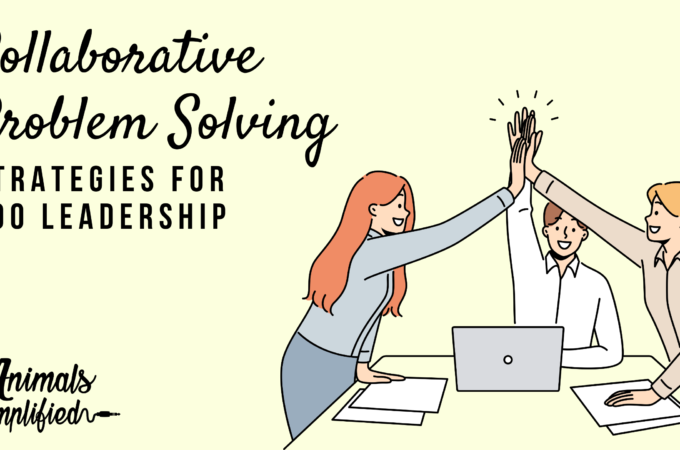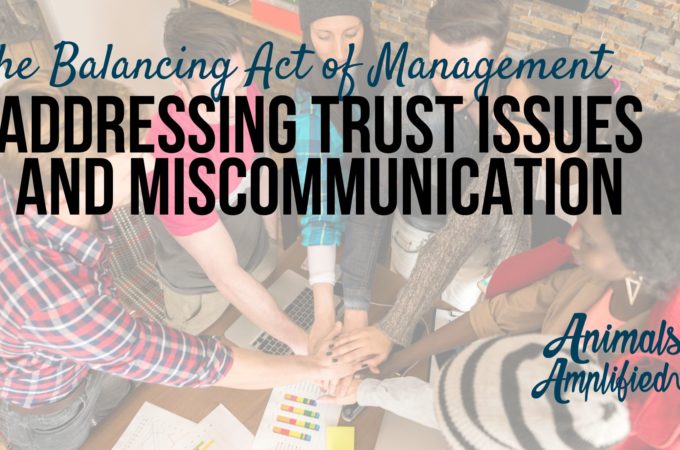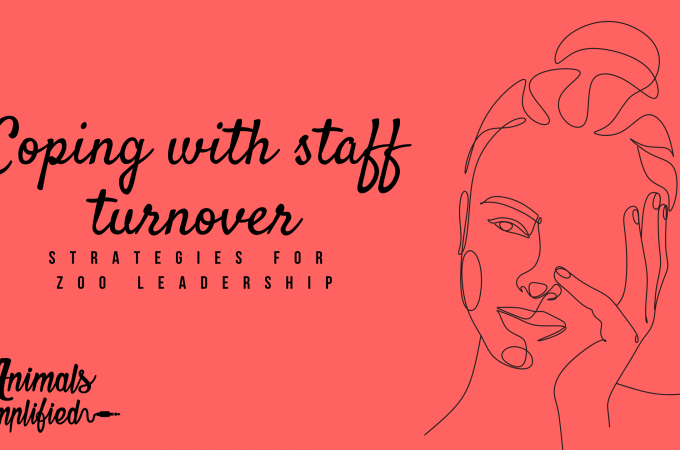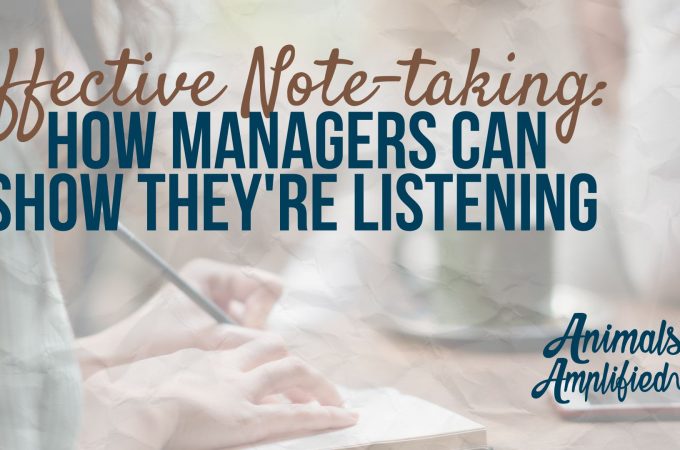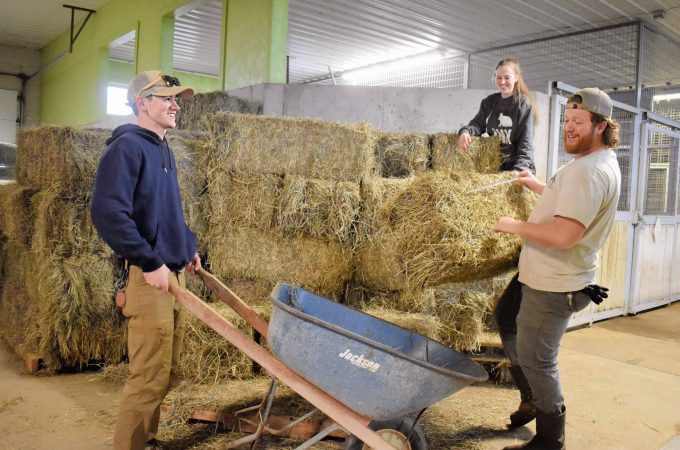
Unionizing zoos case study
Zoo unions are on the rise. We’ve shared other information about the pros and cons of unionizing a zoo and the process of unionization of zoos. This blog will look closely at a case study of how one employee’s pay and benefits might change if her zoo unionizes. We will also explore why zoos choose to unionize. Join us as we explore the complexities of unionizing zoos and their impact on the employees working there.
Examples of Zoo Unions
Many zoos that have unions have been so for decades. For example, the Bronx Zoo in New York City unionized in the late 1970s. All Wildlife Conservation Society institutions are unionized and have been for many years. The Detroit Zoo in Michigan unionized in the early 2000s. The employees at many zoos like Detroit and the Bronx are city employees or are represented by the same unions that represent the city employees.
The Teamsters union represents Brookfield Zoo, Potawatomi Zoo, Woodland Park, and Mesker Park Zoo. It’s difficult to find information on when the unions began representing these organizations, but I understand that it’s been around for a while.
AFSCME seems to be the growing force in zoo unions as they represent the following organizations:
- Minnesota Zoo
- Henry Vilas Zoo
- Peoria Zoo
- Henson Robinson Zoo
- Columbus Zoo
- Zoo Miami
- Little Rock
- Miller park zoo
- Louisville Zoo
- Cincinnati Zoo
- Connecticut’s Beardsley Zoo
- Buttonwood Park Zoo
I reached out to AFSCME to ask some questions about their results from a zoo perspective and have yet to get any response. I’ll be sure to update this blog if I do hear from them.
In 2005 Binghampton Zoo unionized; in 2008, Akron Zoo voted in favor of unionization. In 2010 San Francisco Zoo incorporated its veterinary technicians into the zookeeper’s union represented by the Teamsters. Pest management and laboratory and veterinary technicians were added to the union at San Diego zoo between 2013 and 2017. And from 2017 to 2021, no new zoos unionized but Woodland Park, San Diego, and San Francisco added additional departments to their representation.
In 2022 Rolling Hills Zoo kicked off a wave of new zoos going through a unionization process. Oakland Zoo and Utica zoo also voted in favor of unionization. All three groups have petitioned their zoos, voted in favor of unionization, and are working on a contract to submit. Negotiation is incomplete and, in some cases, hasn’t yet started. The next step is to present the zoo with its contract and begin negotiations to finalize it. This process can take up to 409 days.
Living Desert Zoo is the most recent zoo to petition their employer. The case is still open, and the vote hasn’t happened at the publication of this blog. We’ll be watching the outcomes of Living Desert Zoo, Rolling Hills Zoo, Utica Zoo, and Oakland Zoo.
In my research, I received reports that Audobon Zoo had attempted to form a union twice over the years, and both attempts were busted. This may speak to the discussion of the challenges to forming unions in “Right-to-work” states.
Why zoos unionize
In talking with keepers who are pro-union or have chosen to unionize, one of the most common reasons is fair pay. They often cite a disparity between zoo CEO’s making six figures and front-line employees making closer to $27,000-$40,000 a year. They want to see a different distribution of labor dollars. While many other factors go into balancing a zoo’s budget, the unionizing conversation focuses on unequal benefits and salaries.
Anti-union zookeepers I have talked to don’t have issues with CEOs bringing home big salaries. “It’s a completely different job than I do and requires a different set of skills. It’s not possible to compare leadership salaries with front-line keeper salaries.”
Unions are also businesses and pay salaries to their leaders. Out of curiosity, I wanted to see how the union business model differed from that of a zoo. Zoos have much more overhead and operational expenses like animal feed, veterinary care, operations, guest services staff, etc.
So I focused on the differences in CEO salaries compared to front-line keeper salaries. AFSCME, one of the most used zoo union representatives, has information about their financials, staff, and leadership pay listed online. Their directors make six figures while frontline staff like organizers and office assistants’ reimbursement ranges from $20,000 to $60,000 (roughly).
Ironically, zoo employees might exchange one “man” for the other when they choose to unionize. Through unionization, zoo employees no longer work for the zoo. They become union employees and contract workers for the zoo.
Other grievances include favoritism, lack of holiday pay, low wages, and high benefit costs. Of the most recent zoos to unionize, keepers at these facilities say low pay is the biggest motivator. Two of the zoos unionizing in 2022 claim they went years without any wage increase. Zookeepers at one of these zoos claim they pay 80% of the health insurance, and if they chose the highest level of health insurance, it could cost them $800/paycheck.
An Individual Union Zoo Employee Case Study
While it’s challenging, if not impossible, to find comparison data on a keeper’s salary, benefits, and perks before and after unionization. I wanted to try and compare a hypothetical before and after.
Mary works at a facility that is not unionized. Her starting pay is $15.00, she receives three weeks of PTO, and her employer covers her health insurance at 100%. After a year of employment, she receives a 9% increase* plus a $100 bonus, bringing her hourly rate to $16.39. After her second anniversary, she receives another 9% increase and a $5000 bonus bringing her hourly rate to $20.28. Her employer also adds an annual shoe and uniform allowance of $150.00. She is eligible to attend conferences, be promoted based on merit to higher-paid positions, and can negotiate her days off.
At the end of year two, her teammates decide to unionize. They go through the process of finding a union to represent them and vote yes to unionizing. After that, they work on their contract and present it to leadership. Annual increases and new positions are put on hold during negotiations, so she does not receive an increase in her third year of employment. Due to financial uncertainty, the zoo suspends professional development and bonuses. She ends year three at $20.28.
Zoo Votes Yes for Zookeeper Union
After the contract is negotiated, the hourly rate is increased by 3.8%, which is the typical difference between union and non-union employees. This brings her new rate to $20.73. Still, she pays 1.5% union dues (typically 1-2%), so her take home is $21.04. The union contract ended with two weeks of PTO and employees paying 20% of their health insurance. After those things are considered, her take home is a little less due to paying $100/paycheck for health insurance. Union employees typically do not receive bonuses unless negotiated explicitly into the contract, so she doesn’t receive those anymore.
On average, unions negotiate about 2.1% increases/year for their members, and her union did too, so by the end of year six, she’s making $21.34 before health insurance. She’s mid-level in her seniority, so she usually gets 3rd pick of weekend days. There are just two people ahead of her in line for potential promotions, so she has that to look forward to. Another perk is she has the protection of the union for disciplinary action.
Zoo Votes No for Zookeeper Union
In the situation where the employees decide to vote no against the union or the union is never proposed. It’s reasonable to think that pay will continue to grow at a rate of up to 9% each year. In year three, her pay would be increased to $22.11. In year four, she would make $24.09, and so forth.
She would also be eligible for bonuses and continue to have three weeks of PTO, and 100% of her health insurance would be paid. Professional development opportunities, promotions, weekends, and raises would be merit-based. The team could continue to advocate for additional perks like shoe allowances etc.
We don’t know or have evidence of how wages might change if employees petition and present their list of grievances and then vote no in the election. Would wages increase? It would be interesting to see if sometimes zoo employers need a firm shake with the threat of unionization for them to prioritize compensation.
Unionizing Zoos? Yes or No?
Overall the unionization of zoos is a complex and divisive topic, and it can be hard to feel like you’re getting unbiased information in your research. I often say, “It’s just more complicated than that.” There are many cases in my research where there was no other option than for the zoos to unionize. No raises or increases in pay for five years is one example. In other cases, my opinion is always to raise issues with your leadership first, professionally and clearly.
I think the increase in unionizing zoos should be considered seriously by leadership. The zookeepers I interviewed lack trust in their leadership to advocate for them and advance their quality of life. They cite rampant favoritism and bias in the industry as a reason to trust unions over their employers. Most would rather have more stagnant, higher pay and give up merit-based increases to avoid the potential of being fired on the spot.
In my experience, zoo leaders are listening and working hard to increase pay and transparency. Many zoos I spoke to have committed to an 8%-30% annual increase to improve pay. They are incorporating Employee Assistance Programs, increasing PTO, and focusing on culture, but it doesn’t seem to be happening fast enough. Improving compensation, communication, and sharing plans can help improve leadership and zookeeper relations, but if you think you’re moving fast enough, you probably aren’t.
For more on unions, read our pros and cons blog or blog on the process of unionization.
For more on how to negotiate for better pay, read this blog.
Read here for more on how to raise issues to leadership and have your voice heard.
* 9% increase, PTO, and shoe allowance based on an informal survey of five different non-union facilities increase history, benefits, and PTO policy. There are numerous facilities that don’t have a history of such increases or the perk of paid in full health insurance but I was unable to find keepers at those facilities to share increase history and pay.

